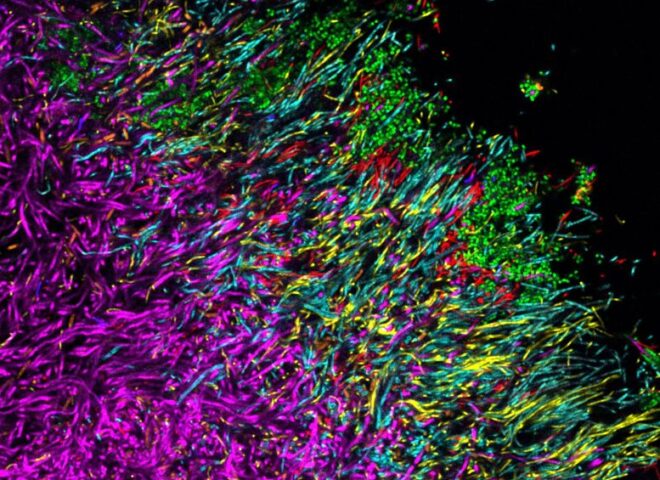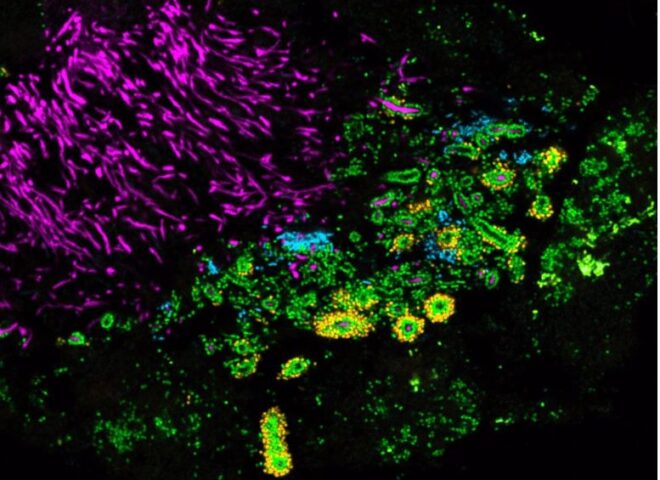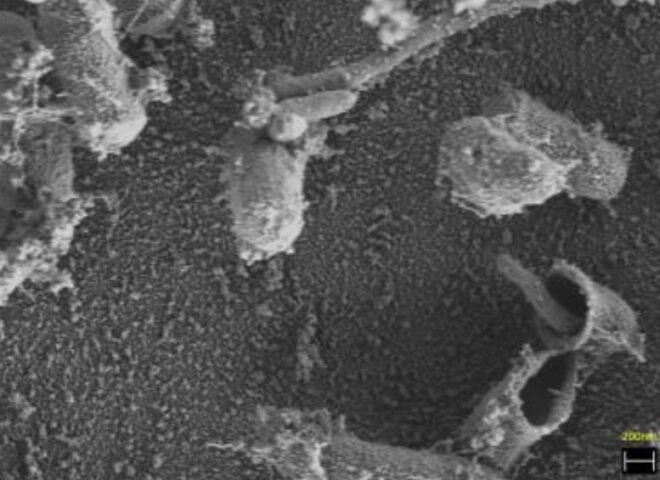Thousands of different types of microbes can be found on the surfaces of our bodies. They live both inside and outside, and collectively are referred to as our microbiome. The bacteria living inside our mouths make up what’s known as the oral microbiome.
Research at ADA Forsyth includes world-renowned expertise in the oral microbiome. ADA Forsyth is home to the Human Oral Microbiome Database, or HOMD, a comprehensive catalogue of microbes that are representative of the oral and nasal microbiome.

Partners in our Health
At the ADA Forsyth Institute, we believe that the study of the oral and nasal microbiomes will lead us to a deeper understanding of tooth decay, connections between oral and systemic health, and risks for certain infections.
Oral microbes are more than just idle passengers—they’re active partners in our health. As we’ve learned more about these microbial communities, it has become clear that the microbiome can vary dramatically from one body site to another, and from one person to another. Scientists are charting this variability and determining its role in health and disease. This work is now a major frontier of biomedical research exploration.

Uncultivable Bacteria
To understand how the microbiome functions, researchers must be able to grow and study each type of bacteria in the lab. But a portion of bacteria have remained uncultivable, which has limited progress in many fields, including medicine, environmental microbiology, biotechnology, and energy development.
One important exception is a type called human oral Saccharibacteria, or TM7, which was grown for the first time in 2014 by researchers at ADA Forsyth. Scientists at the Institute are now studying TM7 to better understand other types of bacteria, with the goal of one day having a complete picture of the human microbiome.
ADA Forsyth researchers have also developed a novel methodology to simultaneously image up to 28 types of bacteria within a microbial biofilm, using the oral cavity as a model. This approach, termed ‘CLASI-FISH’, provides a systems-level analysis of microbial community organization through combinatorial labeling and spectral imaging. It allows scientists to visualize, for the first time, the ‘geography’ of biofilms—where specific bacteria are located and with what other species they are most commonly associated.

Expanded Human Oral Microbiome Database
ADA Forsyth researchers have successfully cultivated the majority of known bacteria in the mouth, nose, sinuses, throat, and esophagus—collectively known as the aerodigestive tract. They have cataloged these microbes in the Expanded Human Oral Microbiome Database, an open-access platform that contains important phylogenetic, genomic, and bibliographic information for each species, as well as bioinformatics tools to examine their genomes.
Many of the strains the ADA Forsyth team identified and made available to the scientific community were previously unnamed and uncultured species. The availability of these strains and their genome information has allowed scientists worldwide to study them for the first time.

